Embarking on a rafting journey through the Grand Canyon began by dialing a phone number that I received in an Instagram DM from a stranger. The message read, “Hey, I know this is out of left field, especially since we’ve never met and you have no idea who I am—and a little bit of short notice—but I’ve got an open spot on my boat to float through the Grand Canyon in three weeks.” I was intrigued to say the least, and a few days after asking friends about the messenger and the potential adventure, I decided it was worth making the call to investigate the opportunity further.

An hour into our conversation, having asked a multitude of questions and liking the answers and vibes I received, I “spontaneously” accepted the unique chance-invitation to join this private-guided rafting trip for nine nights. I didn’t know it yet, but I had made a great decision.

A few weeks later, I joined a group of 15 people (already nine days into their journey) dispersed among eight rafts with 10 days worth of supplies. Beginning at Phantom Ranch, the latter half of the journey with my seasoned, river-going friends allowed nine days to travel the remaining 192 miles through the Granite gorges and 70 rapids.
What rapids lay ahead, what adventures, lifestyle, community and living conditions I was in for—I didn’t have any knowledge. I felt a little like John Wesley Powell, the first to explore this region in 1869 and put it on the map, embarking on this foreign expedition. In a journal that was later published as the popular book “The Exploration of the Colorado River and Its Canyons,” Powell wrote, “What falls there are, we know not; what rocks beset the channel, we know not; what walls rise over the river, we know not… With some eagerness and some anxiety and some misgiving we enter the canyon below and are carried away by the swift water through walls which rise from its very edge.”
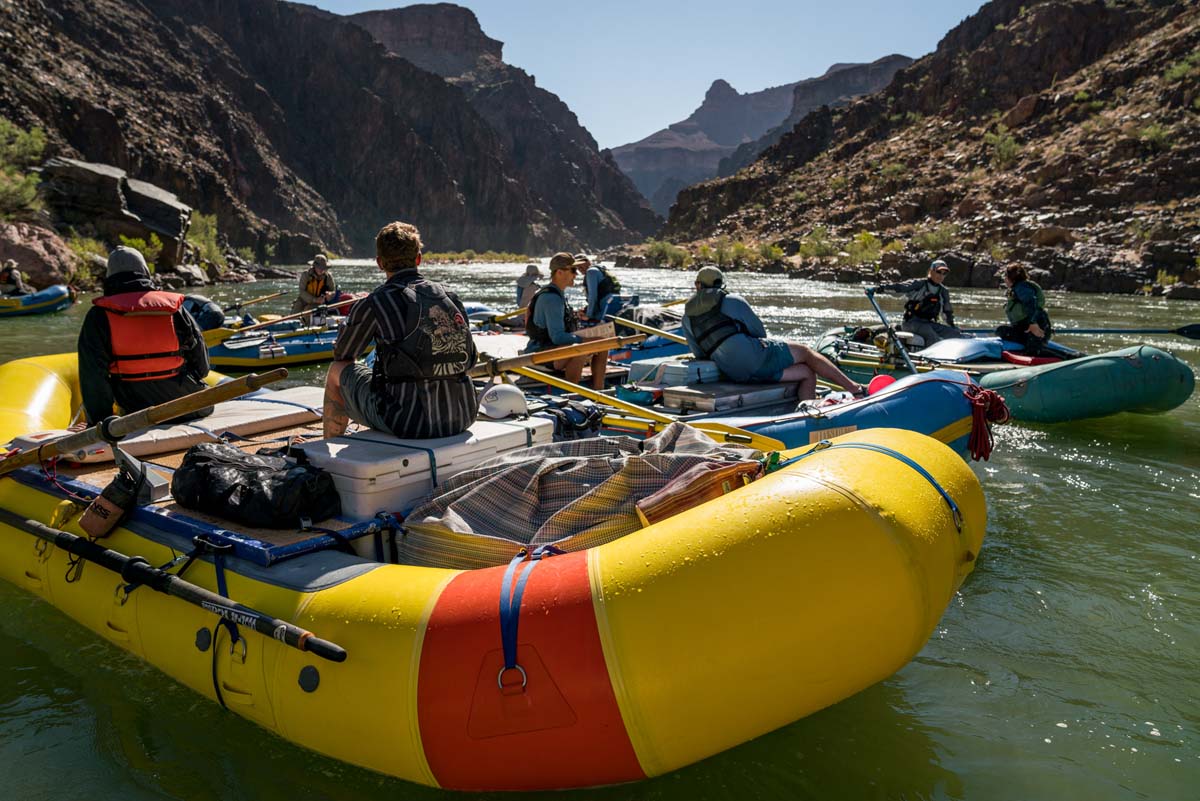
The Grand Canyon flows in an abundance of history, geology and adventure. Archaeologists believe that Native Americans inhabited the rim and canyon year-round beginning approximately 4,000 years ago. The first groups of people passing through the canyon and surrounding areas while hunting game and migrating during seasonal changes dates back to 10,000 years ago. The Havasupai tribe has been living in and around the Grand Canyon South Rim for the past 800 years, according to anthropologists. Today, the Havasupai and Hualapai Reservations are located on the South Rim of the Canyon. The Navajo Nation and Hopi Reservations are east of the Canyon.
Floating through the morphing walls and observing the different types of rocks present summoned fascination. The Grand Canyon is a world-renowned showplace of geology. There are nearly 40 major sedimentary rock layers exposed in the Grand Canyon, ranging in age from roughly 200-million to almost 2-billion years old. Fortunately, I shared a raft with a geology enthusiast, who bestowed me with knowledge and terminology. I chose Vishnu Schist as my favorite rock because it is one of the most ancient rock formations, at an unfathomable estimated 1.75 billion years old. It’s jet black and stunningly gorgeous. I kept thinking, “This Vishnu has seen so much.”

Within 30 minutes of joining the adventure at Phantom Ranch, the group let me know that I was in for a treat. We would be stopping to scout the first major rapid of the trip. They gave me a quick and thorough safety briefing.


Several times a day, we pulled the boats into an eddy up-river from major rapids and tied the bow line to trees on shore. We walked trails to lookout points to scout our lines for the rapids.
Everyone in the group goes to scout. It’s fascinating how they read the hydraulics of the water.

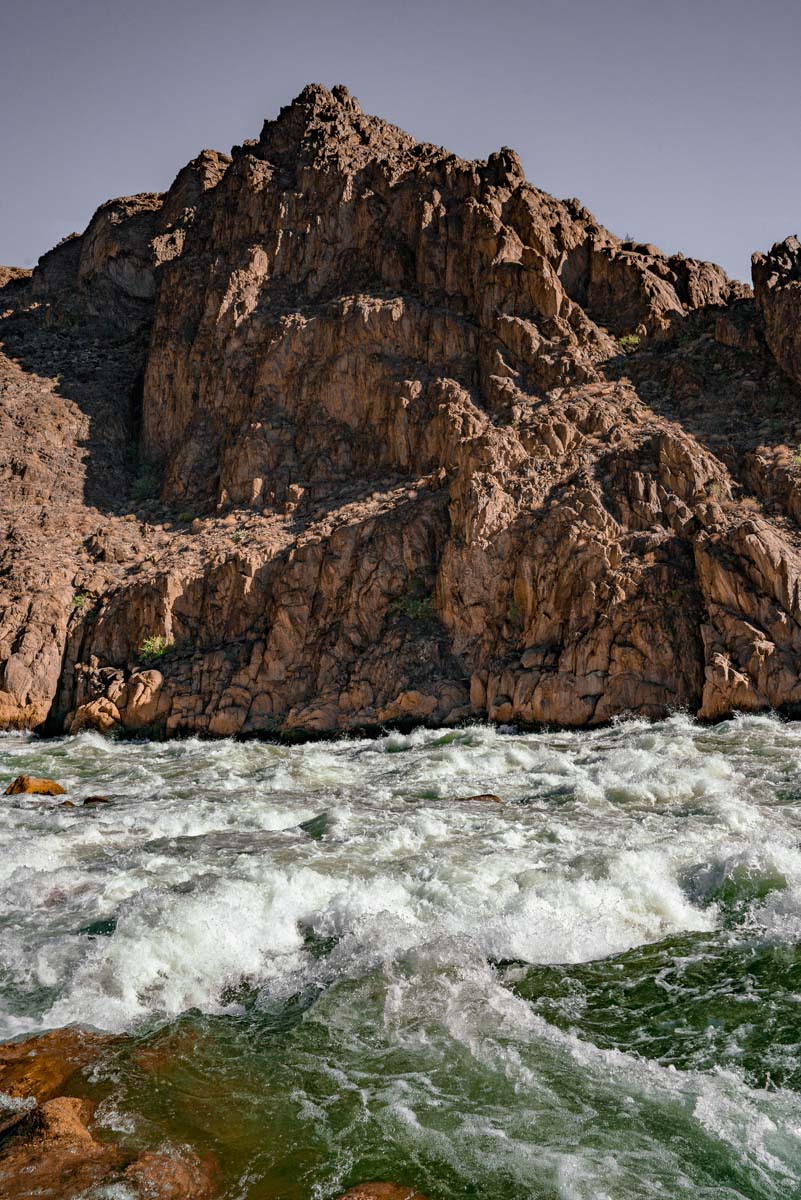

After safely passing through several class 3-7 rapids and conquering adequate river mileage, we stopped at a designated camp spot that served as home for the night. The stretch of the Colorado River that snakes through the Grand Canyon often uses a different rating system for rapids. The class 1-10 system that is used in the Grand Canyon roughly parallels Classes I-V on the International Scale of River Difficulty (ISRD). These categories, or “classes,” give rafters an idea of the skill level (novice to expert) needed to navigate a specific waterway.
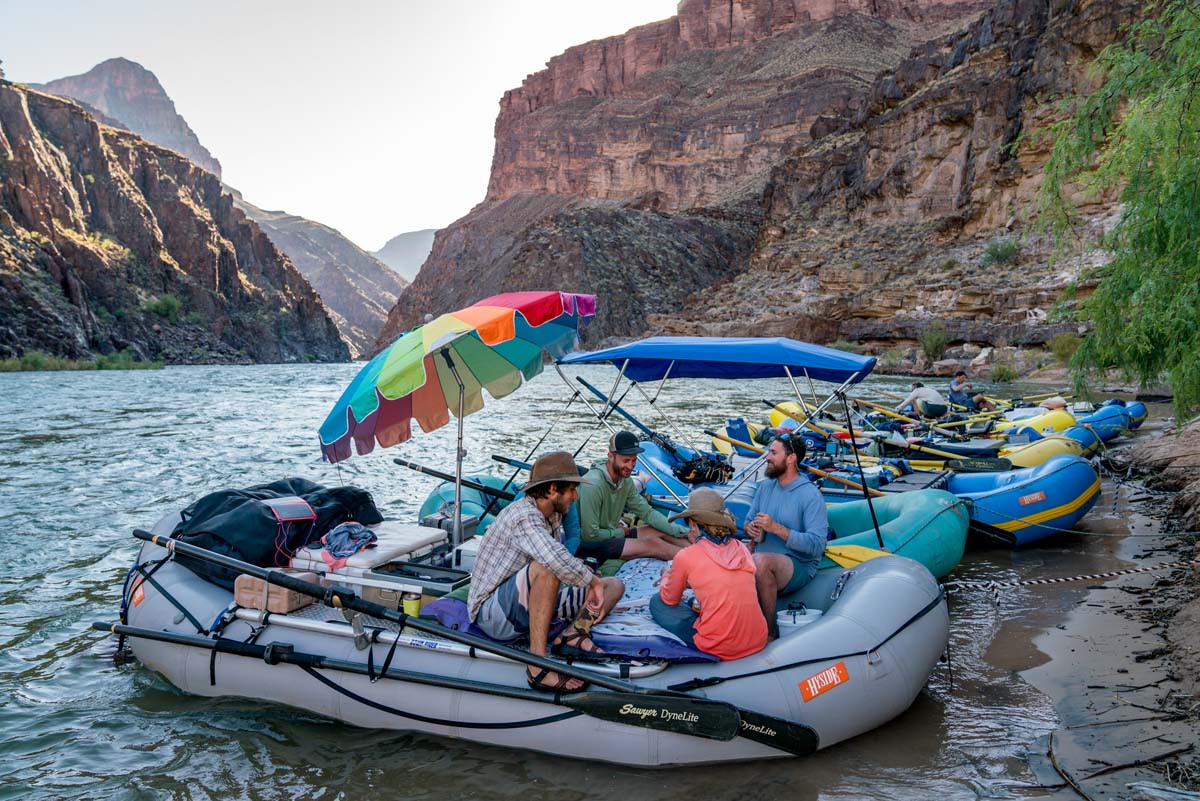
Each afternoon, we found a new site to spend the evening. Campsites dot the river banks of the Colorado most of the 277 miles of the canyon—however, not all are easily spotted or vacant.
The sun eventually ducks below the canyon wall ushering the shade. After a long day in the sun, big smiles and easy energy sweep across the group. Cards, mancala, chess and clever word games keep the group entertained once the boats are unloaded and the kitchen, garbage and groover (bathroom) are established. Work first, play second—and there is always plenty of time for both.


Others use this opportunity for alone time—to read a book, write or take to the frigid, yet beckoning waters of the Colorado to rinse away sand and sweat in an epic bath. The body quickly adapts to the cutting chill of the waters and eventually returns to them again and again, without notice of the cold but only to the relief they provide from sweltering temperatures.


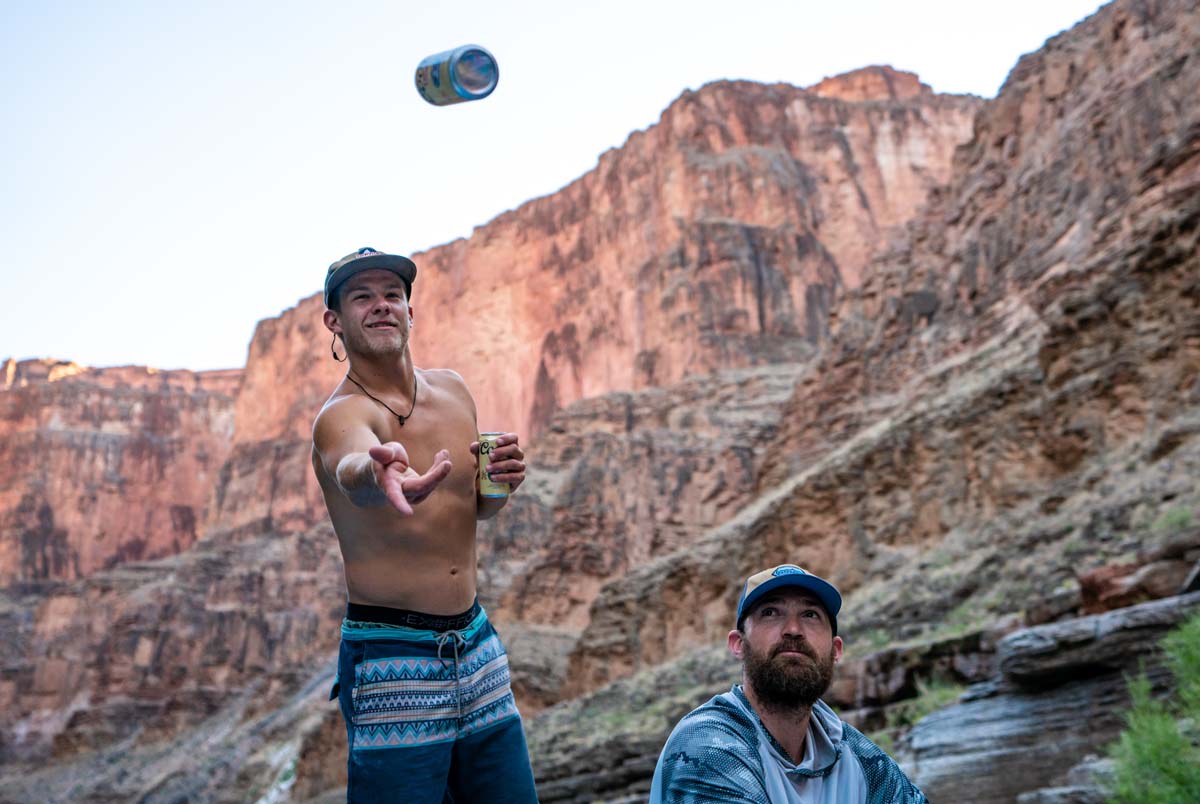


Every evening after river baths, we congregated in camping chairs to share a meal cooked by a team of raft-mates. Lizards watched from nearby rocks as stories, banter and laughter filled the space, and we gratefully chewed the prepared meal.
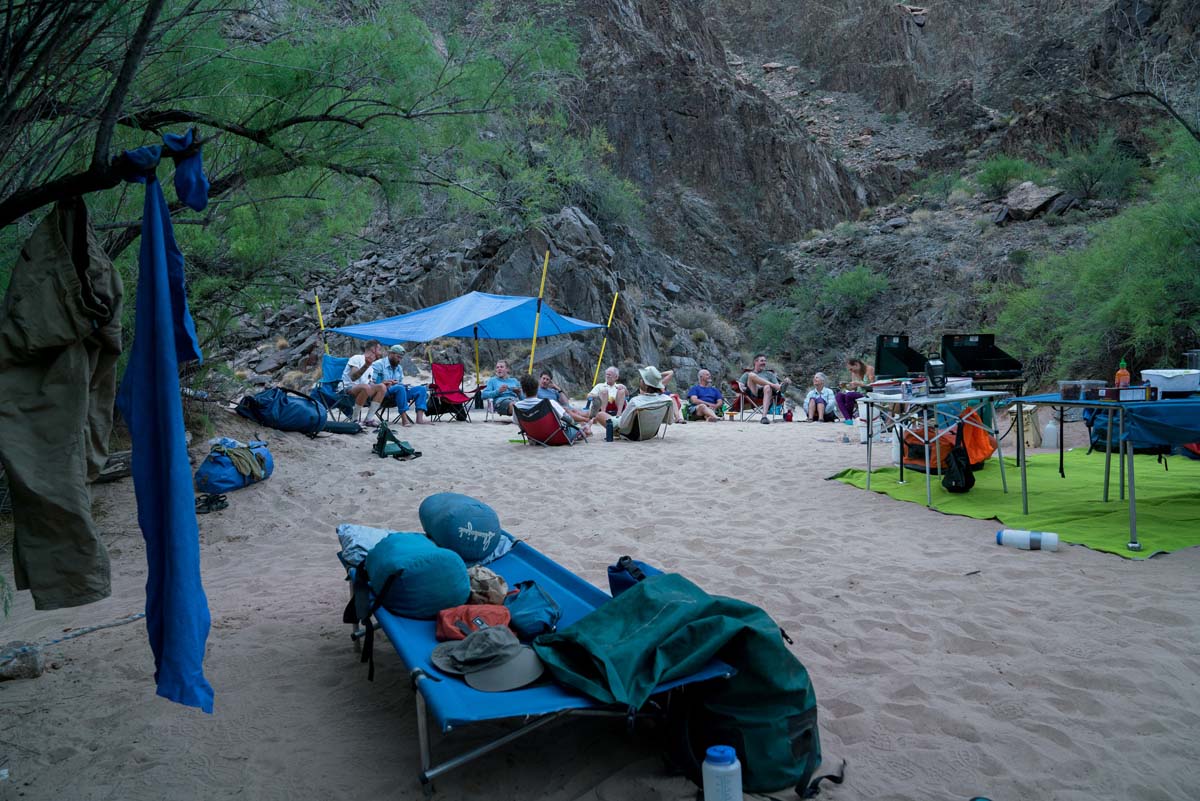

We cleaned our dishes in a line of four buckets of river water, two of which we heated over a flame and added either soap or bleach to sanitize. Then people pitched in to put away food, clean up the kitchen and strain the water from the buckets so the food particles would go into the garbage instead of the river. We all worked together every morning, afternoon and evening to ensure a tidy camp—employing the “Leave No Trace” methodology.

After long, fulfilling days, with energy reserves depleted, an early bedtime and the slightly cooler temperatures of dusk were welcomed. Some camped on cots on the beach, others slept on the rafts. Sleeping elevated from the ground is the best choice, so creepy crawlers (like scorpions, spiders and snakes) don’t get you while you rest. Nothing but the sounds of the water, wind and desert creatures remained once we retired.

In the summer, mornings come early. The sun rose around 5 a.m.—and the wake up call “COFFEE!” resounded around the camp at 5:30 a.m., followed by large steaming carafes to fill our early-bird mugs.

We were quick to make and eat a group breakfast, use the groover, practice personal hygiene, pack up the kitchen, secure belongings on our rafts, pump the rafts and make a clean sweep over camp.

To protect the pristine environment and reduce our impact, we all use the groover. It is said the name “Groover” came from the days prior to placing a plastic toilet seat on the Rocket Box. People would sit on the metal, rectangular-shaped Rocket Box and therefore when they finished their business, would be left with imprinted grooves on their back side.

The paddle system notified others if the groover was occupied. Paddle up meant the groover was vacant.
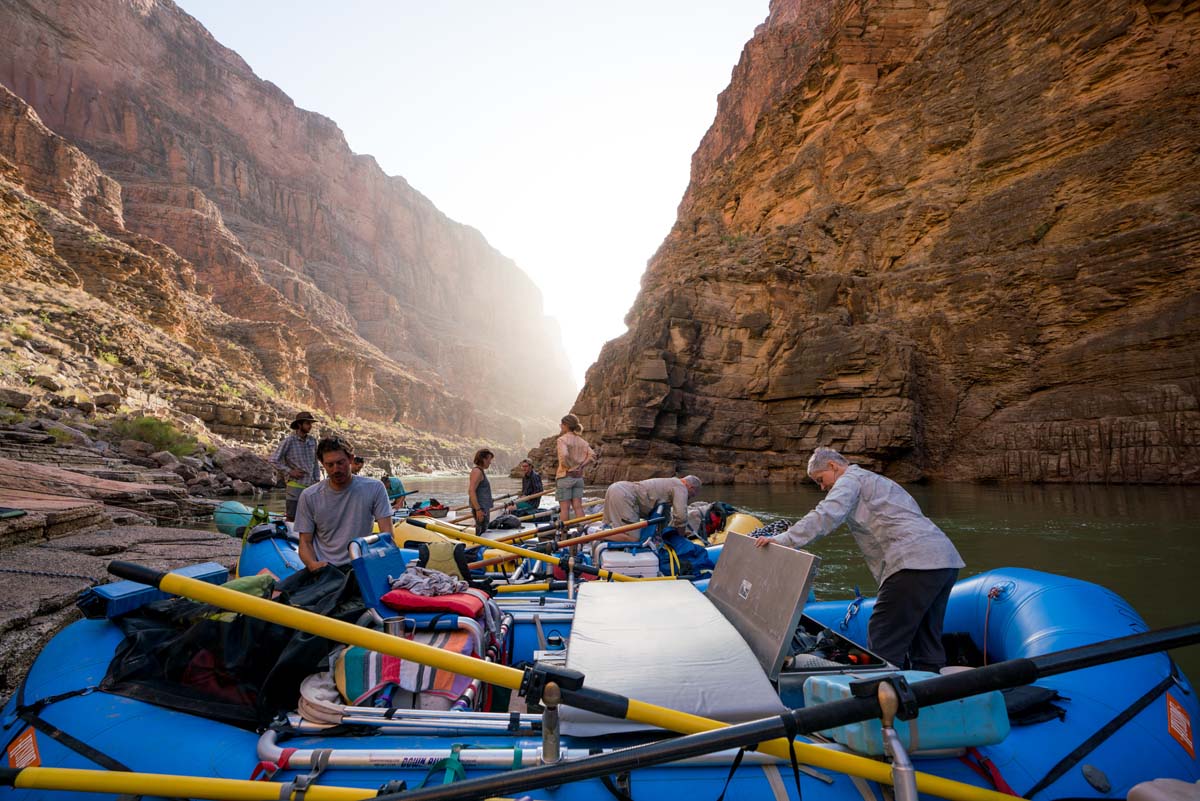

We typically headed out as a group around 7 a.m. every morning to begin making miles down the Colorado. Some days we made more miles than others. Shorter mileage days allowed time for epic side-hiking adventures to a variety of spectacular waterfalls, oases and slot canyons.

A three-mile hike to a waterfall began early, as we attempted to beat the heat before reaching a little oasis in the sky. We ascended thousands of feet on rocky switchbacks and very exposed cliffside trails. The heat came quickly and radiated from the rock walls, baking us like a convection oven.
We consumed all of our water with the knowledge that we could soon refill our bottles onsite at the waterfall.
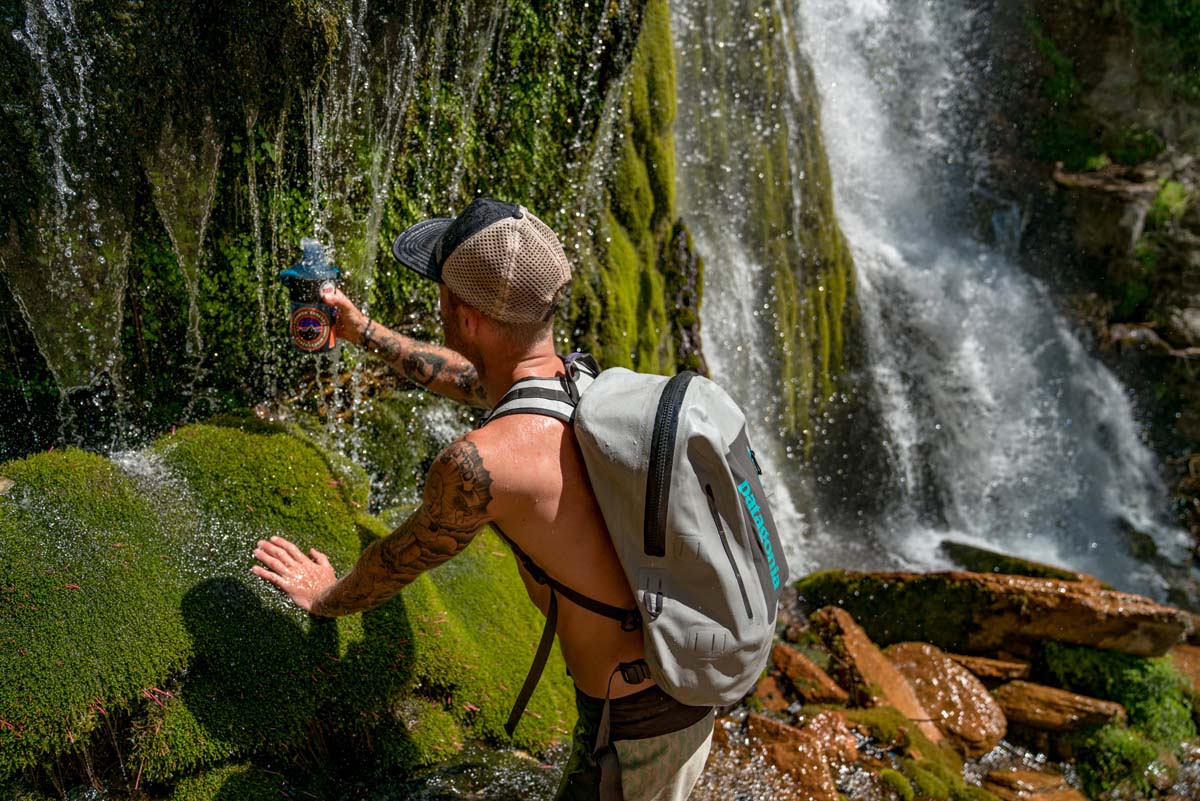

The spring served “all you can drink,” cold-as-ice water. Oh, and mint plants grew wild here. We infused our water bottles with the herb; it was paradise.
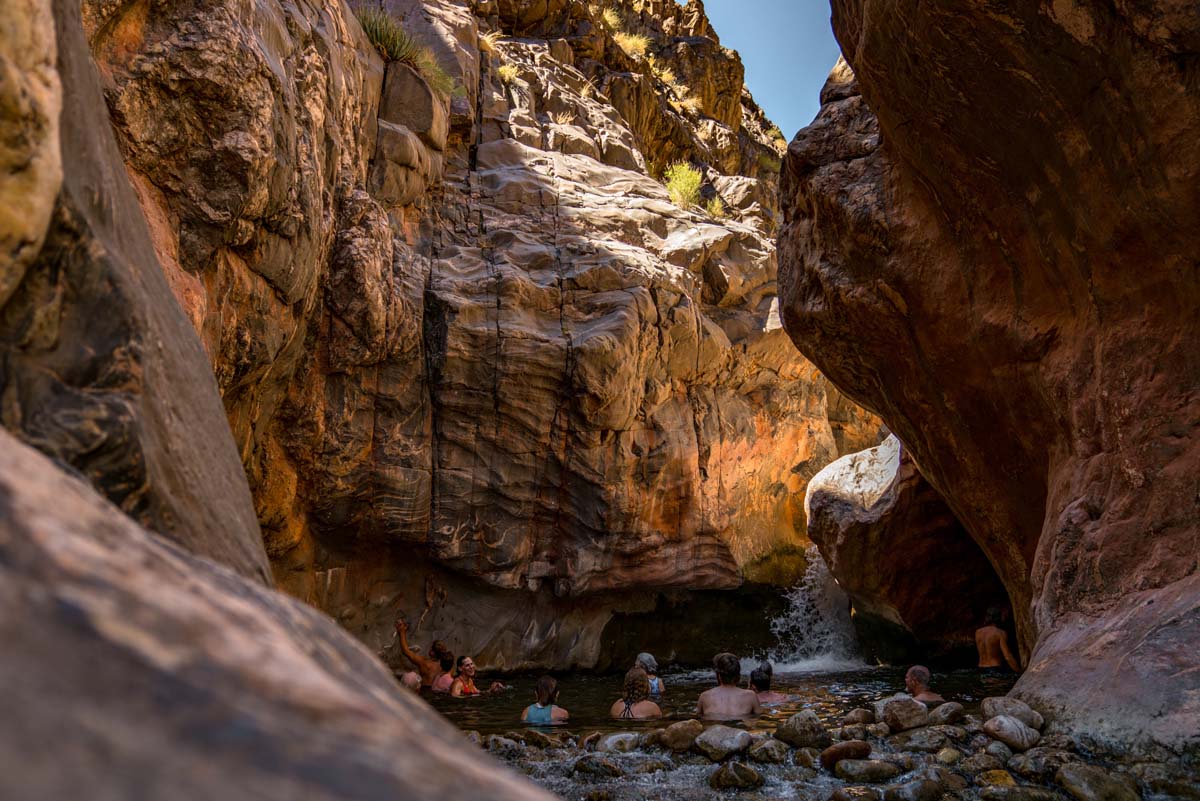
I was surprised not only at the amount of side-hiking and physical activity we got daily, but by how many springs, waterfalls and swimming holes are located on either side of the river. The short hike to this waterfall and pool led to chicken fighting and ultimate relaxation.
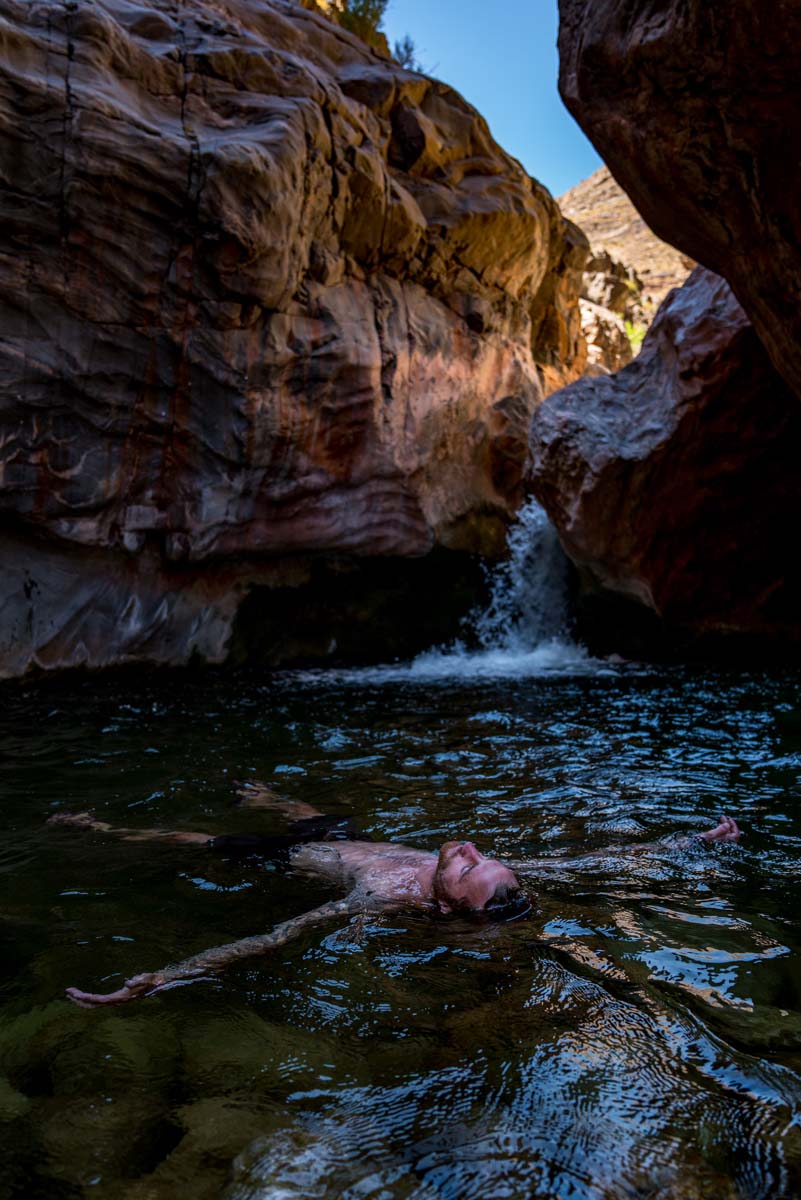



Havasu Falls is a sought-after destination. We planned to arrive extra early so we could have it all to ourselves.
From the river there is a trail to the falls, a route wading through turquoise waters of the slot canyon. From the rim, there is a ten-mile hike to reach the falls. The water at Havasu is turquoise because of calcium carbonate, a mineral found in the rocks.


We laughed with joy (and at our friend who had a hard time swimming through a deep part of the slot with a heavy current).

I’d never felt a relentless, dry heat like at the Grand Canyon. The winds blowing through the canyon felt like a hair dryer, forcefully expelling hot, dry air. The towering rock radiated scorching temperatures as the sun baked everything it touched.
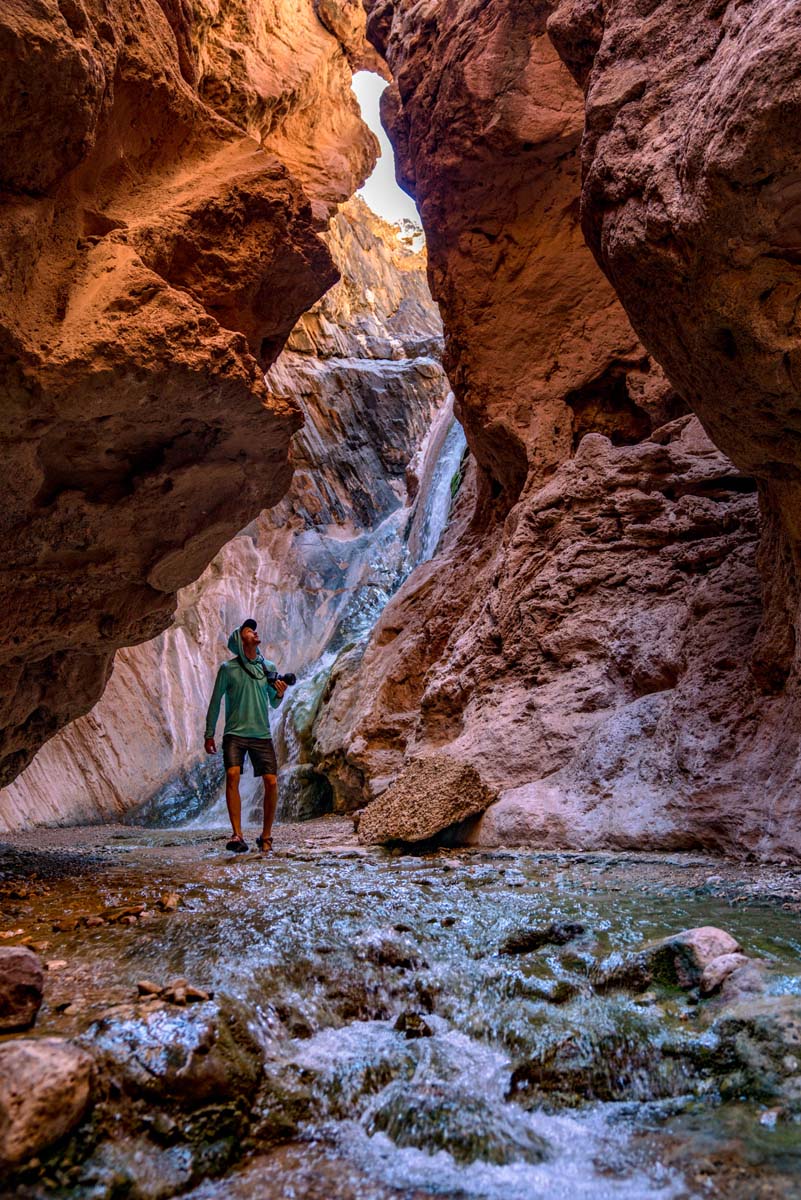
The shaded midday slot canyons and icy waters of their falls offered refuge and pure delight.

Long, calm stretches of water made for a few slow, low-mile days on the river.
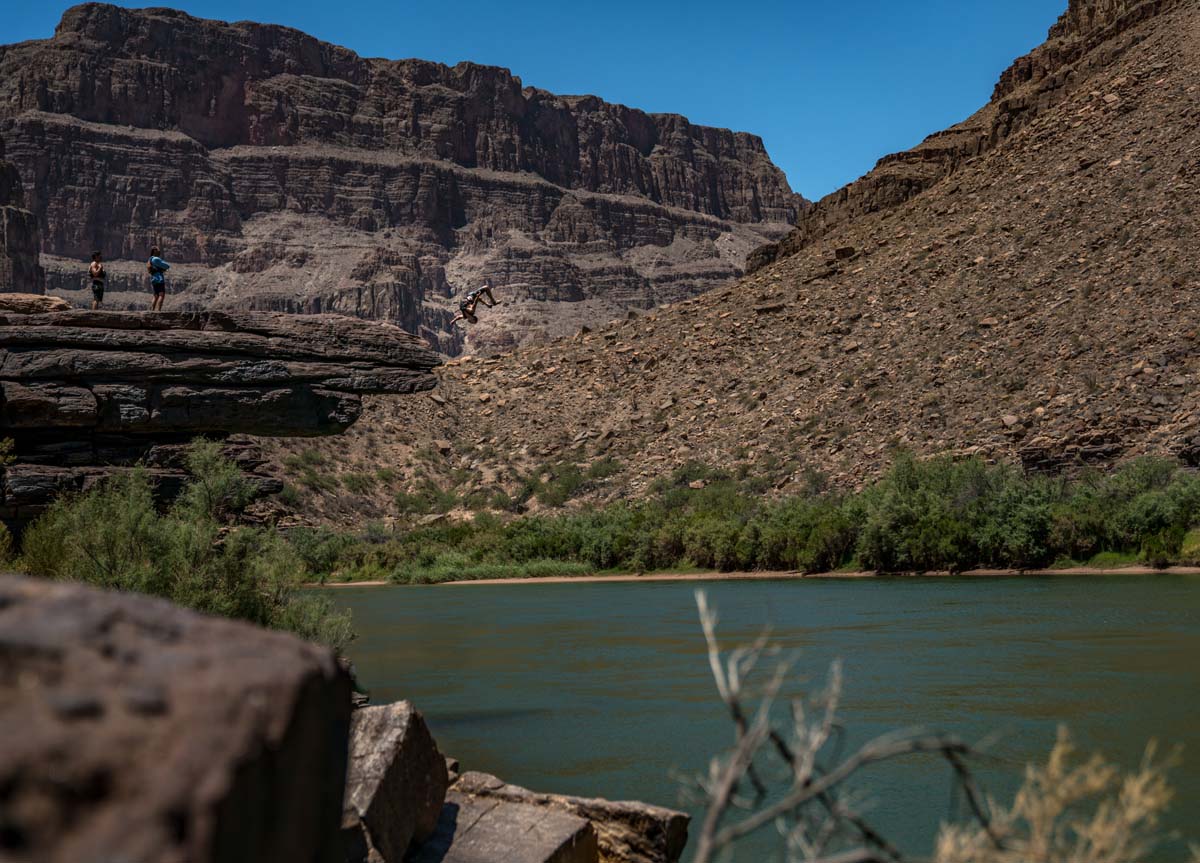

The Grand exposed me to various plants and insects I knew nothing about, but I quickly learned to be wary of their dangers.

One of those is the tarantula hawk, a wasp that supposedly has the most painful sting of any wasp in the world. It attacks tarantulas, paralyzing them with a sting before dragging them into a den. Here it lays an egg that hatches into a larva and devours the paralyzed spider alive—over the course of several weeks.
My first hike, I ran my hand through a beautiful, lush green plant as I walked by. I stopped in my tracks as the plant dug multiple thorns into various points in my hand. Ouch!

Rule of thumb: Don’t touch any of the plants out here—most aren’t friendly and will poke and snag skin.
The canyon walls rise so high that the sun would disappear around 4 or 5 p.m. some days. However, the light remained until 10 p.m., creating interesting hues and lighting.
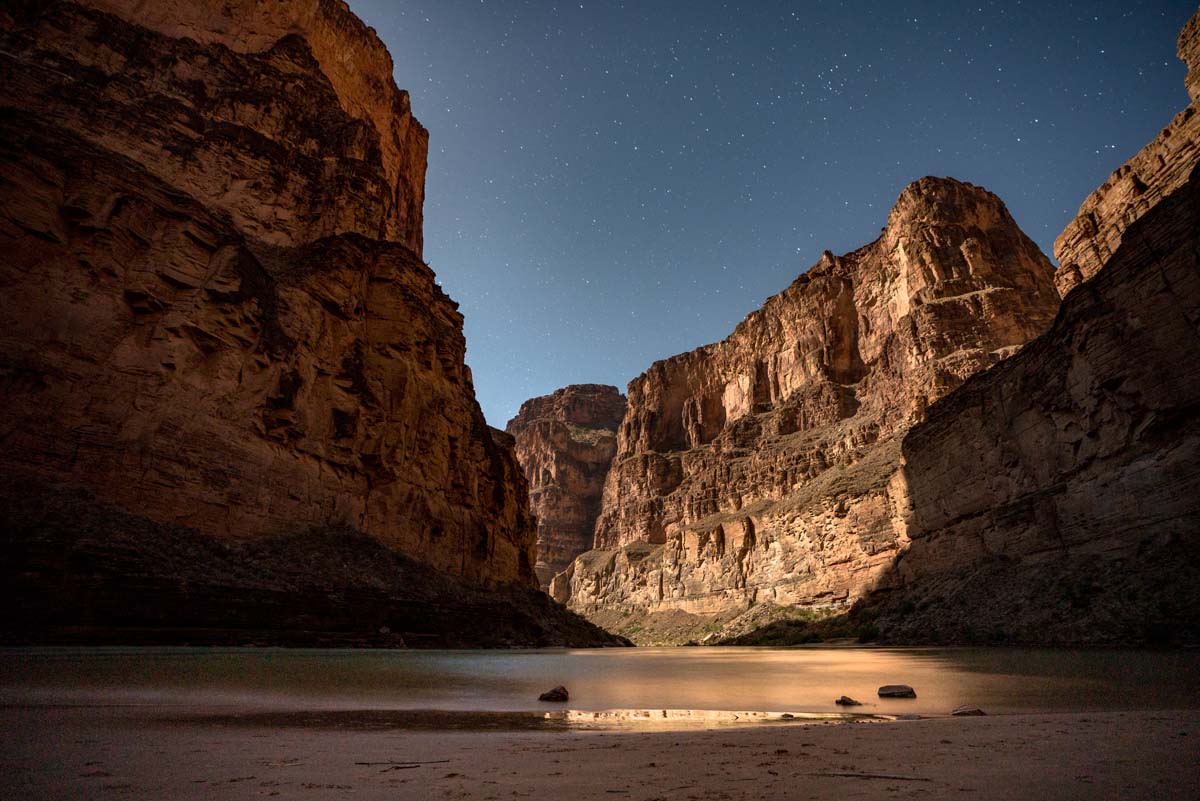
The rising and setting of the moon over the canyon was more dramatic from our perspective. The moonlight played on the walls, bouncing off surfaces and constantly casting shape-shifting shadows as the moon changed position in the sky.
All in all, beers, laughs, games, shenanigans, introspection and solid bonding went down in the sprawling, wild landscape of the Grand Canyon.

We overcame Lava Falls together, the biggest rapid in the Grand (class 10), and one of the most revered whitewater runs in the United States. Fortunately, a wooden oar that snapped in half on that run was our only loss.

Exactly 192 miles after meeting the group at their half-way point, we parted ways where the Colorado River converges into Lake Mead. At the take-out point, we de-rigged, said our goodbyes and headed our separate ways—all of us happier, more fulfilled and changed for the better.
All Photos by Jo Savage.
from Men's Journal https://ift.tt/2zK3G4L
Comments
Post a Comment